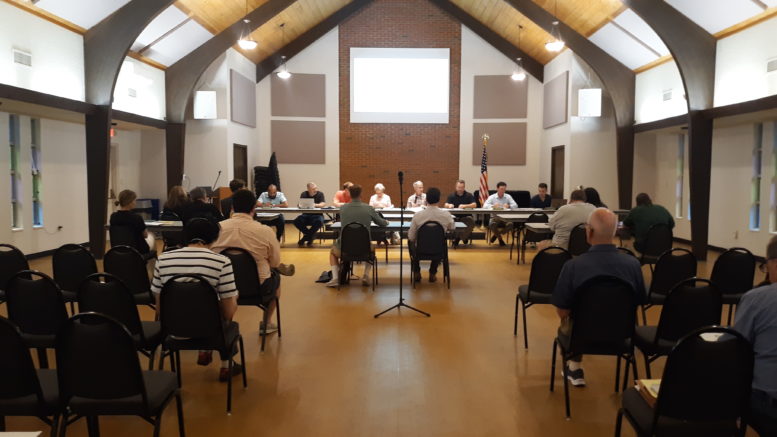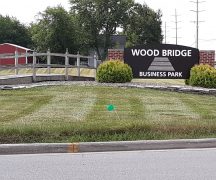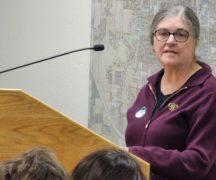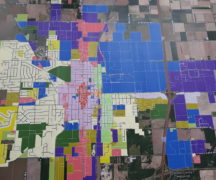By JAN LARSON McLAUGHLIN
BG Independent News
Bowling Green’s zoning code update is intended to make the community more livable for residents and businesses. The plan was presented to city officials Wednesday evening and is now open for comments from the public.
Among the goals of the zoning update are:
- Simplify and modernize the code.
- Remove barriers to new businesses.
- Create a walkable urban center.
- Increase housing options.
- Establish a gateway between BGSU and downtown.
- Create a local identity.
- Maintain neighborhoods.
- Increase health and fitness opportunities.
But in order to meet these goals, the city will have to consider some controversial topics. For example, the new zoning code includes “commercial neighborhood” and “pedestrian residential” zoning – both which allow some businesses to coexist side-by-side with homes.
For example, a microbrewery would be allowed in neighborhood commercial zoning. The definition for microbrewery is an establishment where alcoholic beverages are manufactured, possibly including a bar or restaurant use as well.
Nolan Nicaise, urban and environmental planner at ZoneCo, the firm hired by the city to work on the zoning code update, used this example because of “a lot of press attention” recently given to Arlyn’s Good Beer microbrewery on Hankey Street in a residential area.
The proposed zoning code update would allow outdoor entertainment as an accessory use at the brewery, as long as it is not amplified by speakers, amplifiers or microphones, Nicaise said.
Another controversial change is the inclusion of zoning for Accessory Dwelling Units on residential lots with another principal dwelling.
Planning Commission President Bob McOmber asked if the zoning code update needed to include these potentially contentious categories. Nicaise said no category is mandatory – but that officials may want to consider how else the city can meet the zoning goals for the community.
Nicaise suggested that rather than not allow a zoning classification such as neighborhood commercial, that the city try to minimize the negative impacts. He also mentioned that some residents may find a bagel store as annoying as a bar.
Following are some other changes proposed for the update:
- Parking space counts would not be regulated in most cases. This would reduce government regulations and allow landowners to choose the appropriate parking spaces for customers and tenants.
- Bicycle parking would be required wherever there are 20 or more vehicle parking spaces.
- Fence heights would be limited to 4 feet in front yards, and 6 feet in side and rear yards, in most cases. Fences would be required for pools, hot tubs and retention ponds.
- Vegetated buffers would be required to insulate incompatible uses of properties.
- Outdoor lighting regulations would aim to reduce the nuisance of glare at night.
- Signs would be regulated by numbers, types, area per sign, and total sign area.
As for properties that are nonconforming with the proposed zoning code, they will be permitted to continue as long as they were legal. A zoning certificate must be sought for all nonconforming uses within three years of the new code being adopted.
Nicaise stressed that the zoning code update must be flexible – since it is impossible to know the needs of future zoning.
“There are robots roaming the sidewalks of Bowling Green. Ten years ago, that would have been preposterous,” he said.
Nicaise also noted that many community zoning codes still address businesses such as tanneries. “I don’t see many tanners anymore,” he said.
McOmber stressed the importance of the 122-page zoning update to his fellow planning commission members.
“This probably will be the most important thing any of us do on the planning commission,” he said.
McOmber said he would like to give the public ample chances to submit comments online or in person at planning commission meetings.
“I’m very interested in giving the public every opportunity to comment,” he said.
Following is the timeline for the update process:
- Until July 1, public comments can be submitted to the online portal at https://bgohio.org/636/Zoning-Code-Update.
- July 6, the planning commission will allow public comment, hold a work session to address online public comments and suggest edits to the update.
- Aug. 3, the planning commission will review edits and schedule a public hearing.
- Sept. 7, the planning commission will hold a public hearing on the zoning code and map, and make a recommendation to City Council.
- Sometime in October, council will hold the first reading of the proposed zoning code and map, and schedule a public hearing.
- Sometime in November, council will hold a public hearing and vote on the adoption of the zoning code and map.





